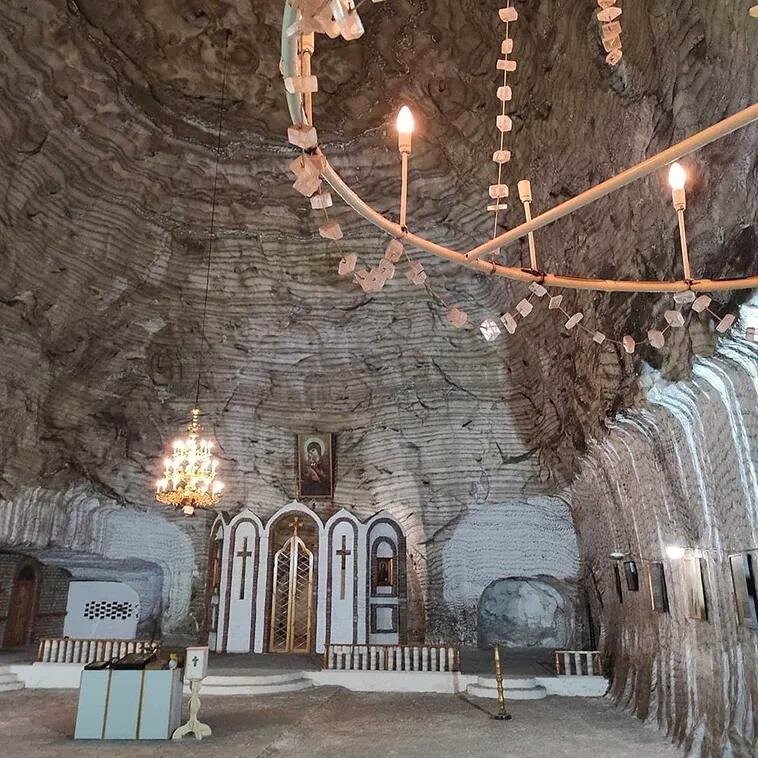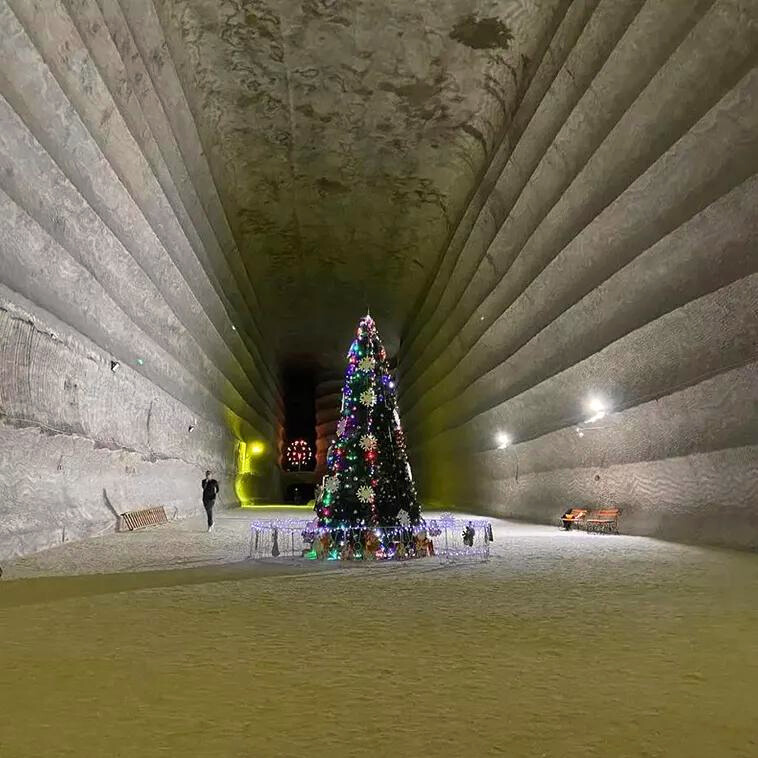The Soledar Salt Mine in eastern Ukraine has long been one of the country’s most remarkable and historically significant sites. Situated in the small town of Soledar, which translates to “gift of salt,” this vast underground network is one of Europe’s largest and most famous salt mines. Known for its extensive tunnels, towering chambers, and unique microclimate, the Soledar Salt Mine has not only played a crucial role in Ukraine’s industrial development but has also become a fascinating tourist attraction with a history stretching over a century.

A Legacy of Mining
Salt mining in Soledar commenced during the Russian Empire in the late 19th century. The mine quickly became one of the key industrial sites in the region, contributing to the local economy and providing employment to generations of workers. Over the years, the mine expanded significantly, and today, it boasts a labyrinthine network of tunnels stretching approximately 200 kilometers (124 miles) underground. These tunnels delve to a depth of 288 meters (945 feet) beneath the surface, with many of the chambers reaching an impressive 30 meters (98 feet) in height. The largest of these chambers, resembling a giant hangar, is around 100 meters (328 feet) long and 40 meters (131 feet) wide, a testament to the scale of operations within the mine.

A Unique Underground Environment
One of the most remarkable features of the Soledar Salt Mine is its unique microclimate. The underground environment maintains a consistently stable climate year-round, with a steady temperature of 14 to 15 degrees Celsius and a humidity level of 60%. This consistent climate has given rise to the belief that the mine possesses healing properties, particularly for those suffering from respiratory ailments. Over the years, the mine has attracted visitors seeking relief from asthma, bronchitis, and other respiratory issues. The mine’s salt-rich air is thought to have therapeutic effects, leading to underground sanatoriums where patients could spend extended periods inhaling the mineral-rich air.

Tourist Attractions and Cultural Significance
Beyond its industrial importance, the Soledar Salt Mine has become a cultural and tourist landmark in Ukraine. The mine’s long history of salt extraction and its unique environment have made it a popular destination for visitors worldwide. Guided tours have been a mainstay of the mine’s operations, offering a rare glimpse into the underground world that few experience.

One of the mine’s most captivating attractions is its underground galleries, where salt crystals have been meticulously carved into intricate sculptures and art installations. These salt sculptures, which range from religious icons to abstract designs, are illuminated with soft lighting, creating an otherworldly atmosphere that leaves a lasting impression on visitors. The mine’s artistic heritage reflects the creativity and craftsmanship of the miners who spent their lives working in these tunnels, transforming the mine into an underground gallery.

The Soledar Salt Mine has also hosted various cultural events, enhancing its reputation as a unique venue. In 2004 and 2006, one of the mine’s vast chambers was repurposed to host classical music concerts, with the acoustics of the underground space providing a stunning auditory experience. The chamber’s vastness and natural acoustics created a venue that attracted performers and audiences eager to witness music performed in such an extraordinary setting. In September 2020, the same chamber was used for a different type of event—a football match, making headlines worldwide. This unusual use of the mine’s space showcased its versatility and underscored its cultural significance.

The Impact of War
Sadly, the Soledar Salt Mine’s story took a tragic turn recently due to the ongoing conflict between Russia and Ukraine. The region, a focal point of the conflict, has seen extensive damage, and the Soledar Salt Mine has not been spared. Once a thriving industrial site and tourist attraction, the mine has suffered significant damage, rendering it defunct. The war has disrupted the lives of those who worked in and visited the mine, and its future remains uncertain as the conflict continues.

Conclusion
The Soledar Salt Mine stands as a symbol of Ukraine’s rich industrial heritage and cultural history. Since its inception in the late 19th century as a significant hub for salt extraction, the mine has evolved into a unique tourist attraction, playing a crucial role in the region’s growth and development. Its vast network of tunnels, towering chambers, and unique microclimate have made it a place of healing, art, and culture, drawing visitors from near and far.

Despite the current challenges posed by the conflict, the legacy of the Soledar Salt Mine endures. It remains a testament to the resilience and creativity of those who have worked and lived in its shadow. Its story fascinates and inspires all who discover this remarkable underground world.
Also you can read an article about Scaligero Castle: The Enigmatic “Sinking Castle” of Lake Garda and more amazing articles in our website Bamboospanda.









